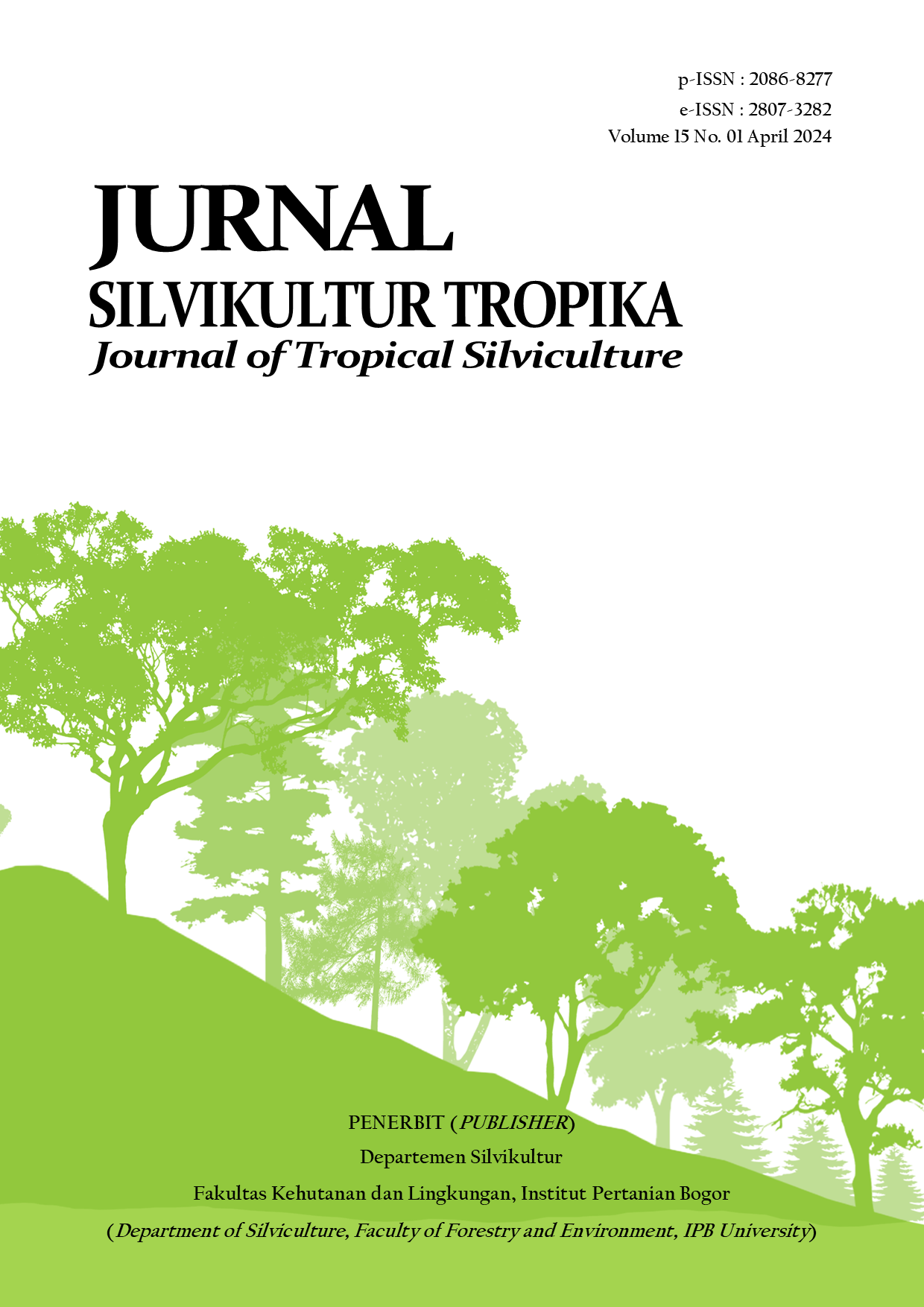Business Feasibility and Agroforestry Management Strategy (Case Study KTH Margo Rukun II Lampung Province)
Abstrak
Tanggamus Regency has the potential to be planted with MPTS which can provide economic and ecological value to the community. The purpose of this research is to identify the management of NTFPs on agroforestry land, to analyze the feasibility of agroforestry businesses, and to design KTH-level agroforestry business management strategies. Data collection was carried out using interviews and FGD methods. Based on financial analysis calculations carried out using the cost-benefit analysis method, a business with an agroforestry pattern of robusta coffee, cayenne pepper, avocado, banana, pepper, red bean, and jackfruit is a profitable business. KTH Margo Rukun II agroforestry business is more sensitive to decreased income than to increased costs. Based on the results of the evaluation of internal and external factor analysis using SWOT analysis, KTH Margo Rukun II is in quadrant I (S-O strategy) where this position shows that the organization has good conditions to continue the business.
Keywords: Agroforestry, cost-benefit analysis, non-timber forest product, SWOT analysis, forest farmer group
Unduh
Copyright (c) 2024 Muhammad Resta Destyana Resta, Handian Purwawangsa, Rahmat Pramulya

This work is licensed under a Creative Commons Attribution 4.0 International License.










